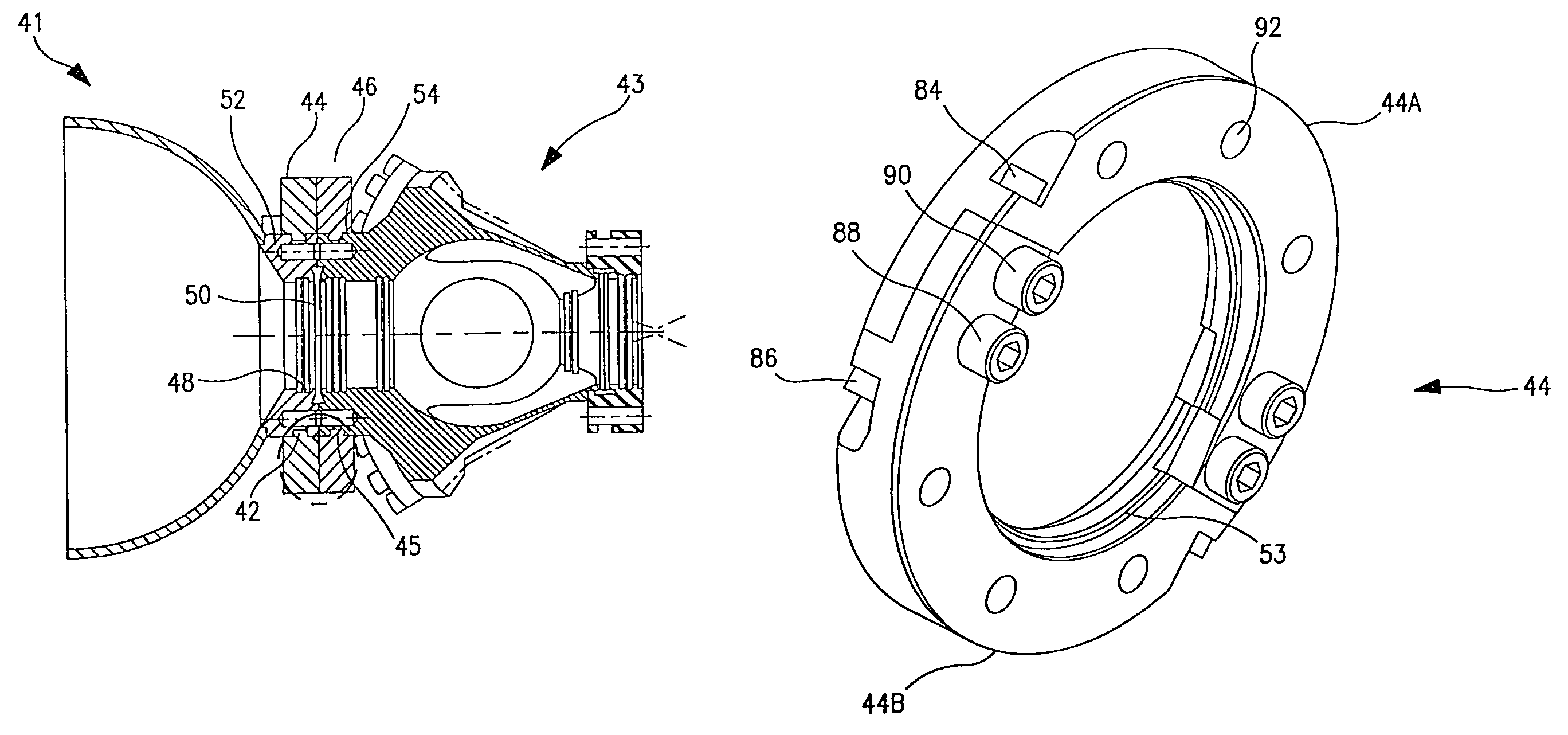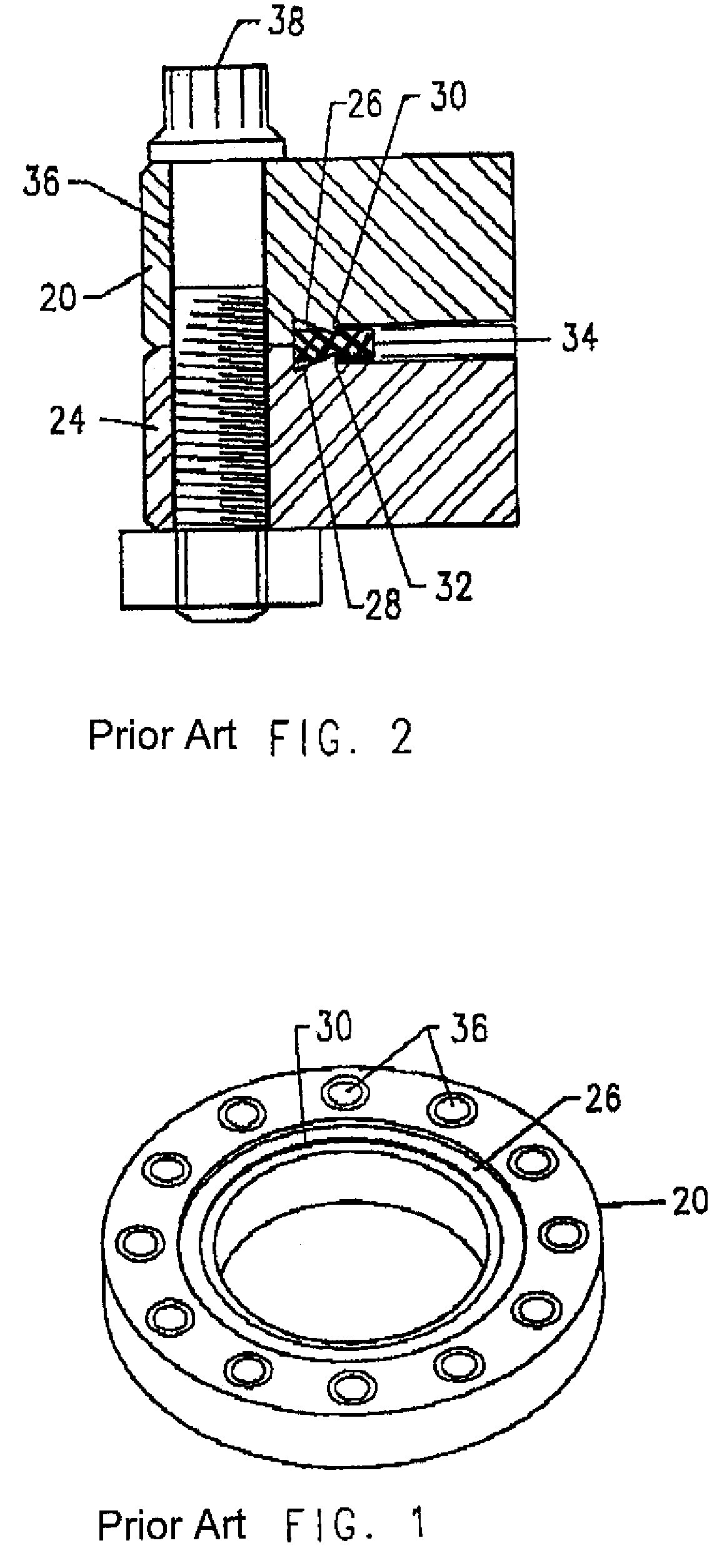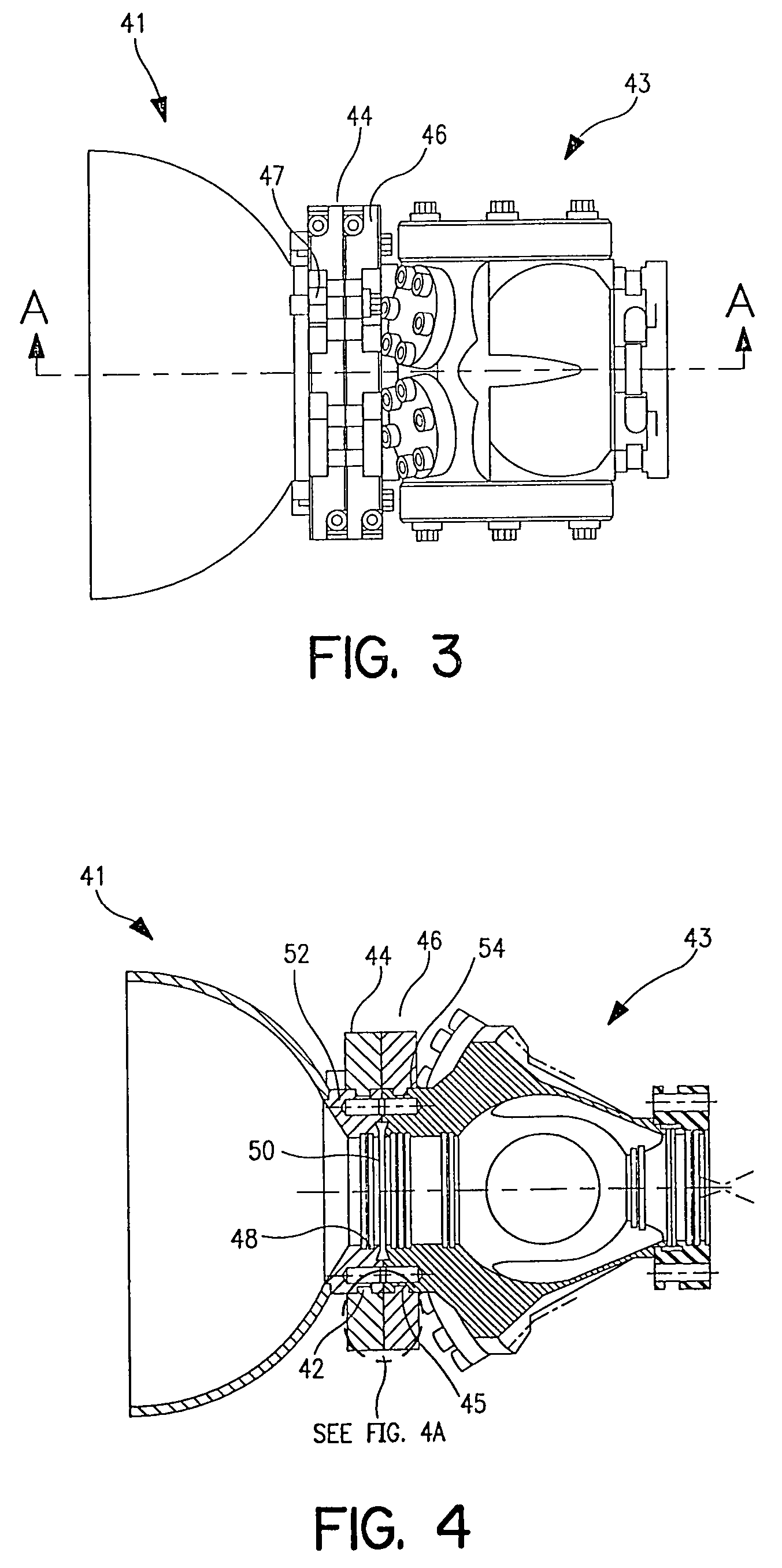Alternative method for sealing all-metal vacuum joints
- Summary
- Abstract
- Description
- Claims
- Application Information
AI Technical Summary
Benefits of technology
Problems solved by technology
Method used
Image
Examples
Embodiment Construction
[0020]Referring to first to FIGS. 3 and 4, an exemplary embodiment of the clamping system consistent with the present invention. FIG. 3 shows a first and a second vacuum system component 41 and 43 each having a corresponding clamp member 44 and 46 respectively attached thereto. The two clamp members 44 and 46 are further joined or secured to one another using auxiliary bolts, one of which is indicated at 47.
[0021]Turning to FIG. 4, a sectional view of the assembly shown in FIG. 3 is illustrated. The individual clamp members 44 and 46 are each attached to respective flanges 52 and 54 of vacuum system components 41 and 43. Each of the flanges 52 and 54 comprise a groove 42 and 45 formed in the outer edge of each flange 52 and 54. The attachment of the clamp members 44 and 46 may advantageously be achieved by means of beads 53 and 55 projecting from the clamp members 44 and 46. It should be appreciated that the beads 53 and 55 may be either continuous or discontinuous, and may also be ...
PUM
| Property | Measurement | Unit |
|---|---|---|
| Force | aaaaa | aaaaa |
| Vacuum | aaaaa | aaaaa |
Abstract
Description
Claims
Application Information
 Login to View More
Login to View More - R&D
- Intellectual Property
- Life Sciences
- Materials
- Tech Scout
- Unparalleled Data Quality
- Higher Quality Content
- 60% Fewer Hallucinations
Browse by: Latest US Patents, China's latest patents, Technical Efficacy Thesaurus, Application Domain, Technology Topic, Popular Technical Reports.
© 2025 PatSnap. All rights reserved.Legal|Privacy policy|Modern Slavery Act Transparency Statement|Sitemap|About US| Contact US: help@patsnap.com



